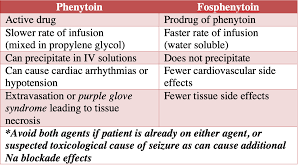A nurse is preparing to administer 4,000 units of heparin subcutaneously to a client who has deep-vein thrombosis. Available is heparin 10,000 units/mL. How many mL of heparin should the nurse administer?
(Round the answer to the nearest tenth. Use a leading zero if it applies. Do not use a trailing zero.)
The Correct Answer is ["0.4"]
To answer this question, we need to use the formula for calculating the dosage of medication:
Dose ordered / Dose on hand = Amount to administer
The calculation is: 4,000 units / 10,000 units/mL = 0.4 mL.
Nursing Test Bank
Naxlex Comprehensive Predictor Exams
Related Questions
Correct Answer is B
Explanation
Choice A rationale:
Alopecia (hair loss) is not a common adverse effect of paroxetine.
Choice B rationale:
Drowsiness is a potential adverse effect of paroxetine, an antidepressant medication that can cause central nervous system effects.
Choice C rationale:
Tinnitus (ringing in the ears) is not commonly associated with paroxetine use.
Choice D rationale:
Peripheral edema is not a common adverse effect of paroxetine.
Correct Answer is B
Explanation
Choice A rationale:
Red man syndrome is associated with vancomycin, not phenytoin.
Choice B rationale:
Hypotension, or low blood pressure, can be an adverse effect of phenytoin.
Choice C rationale:
Hypoglycemia is not a typical adverse effect of phenytoin.
Choice D rationale:
Bradycardia is not a common adverse effect of phenytoin.

Whether you are a student looking to ace your exams or a practicing nurse seeking to enhance your expertise , our nursing education contents will empower you with the confidence and competence to make a difference in the lives of patients and become a respected leader in the healthcare field.
Visit Naxlex, invest in your future and unlock endless possibilities with our unparalleled nursing education contents today
Report Wrong Answer on the Current Question
Do you disagree with the answer? If yes, what is your expected answer? Explain.
Kindly be descriptive with the issue you are facing.
